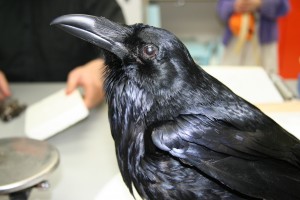Museum exhibit examines winter survival of arctic animals
December 4, 2012
907-474-6941
12/4/12
An exhibit opening Dec. 15 at the University of Alaska Museum of the North examines how northern animals survive when it gets very, very cold.
“Hibernation and the Science of Cold” guest curator Brian Barnes said that question has fueled three decades worth of research at the University of Alaska Fairbanks.
“It only takes about a year of living in Fairbanks before you begin to wonder how animals make it through the winter,” said Barnes, who is the director of the UAF Institute of Arctic Biology. “In some cases we discovered that animals here are doing things nobody had measured before.”
That includes arctic ground squirrels hibernating at temperatures well below zero and insects able to withstand temperatures as low as minus 238 degrees Fahrenheit. Research into hibernation and other survival strategies can also help improve medical treatments.
Barnes said the latest examinations of winter survival strategies at the Institute of Arctic Biology focus on circadian rhythms.

“Hibernation and the Science of Cold” features live hibernating animals and original video games that teach animal winter survival. It also presents some of the questions researchers still have about species that live in Interior Alaska.
Roger Topp, the museum’s head of production, said the exhibit will help visitors understand how durable life can be and the many awe-inspiring ways animals endure Interior Alaska winters.
“I want visitors to see that bears are light sleepers and ground squirrels are pretty much dead to the world when hibernating,” Topp said. “I want visitors to not only see frogs freeze and thaw and then come to life after spending a winter frozen in the mud, but to take a frog step-by-step through that process themselves.”
“Hibernation and the Science of Cold” will be on display in the Special Exhibits Gallery until May 15, 2013.
ADDITIONAL CONTACTS: Roger Topp, UAMN head of production, at 907-474-6985 or via email at rmtopp@alaska.edu. Brian Barnes, Institute of Arctic Biology director, at 907-474-7640 or via email at bmbarnes@alaska.edu.
ON THE WEB: museum.uaf.edu
TB/12-4-12/141-13


